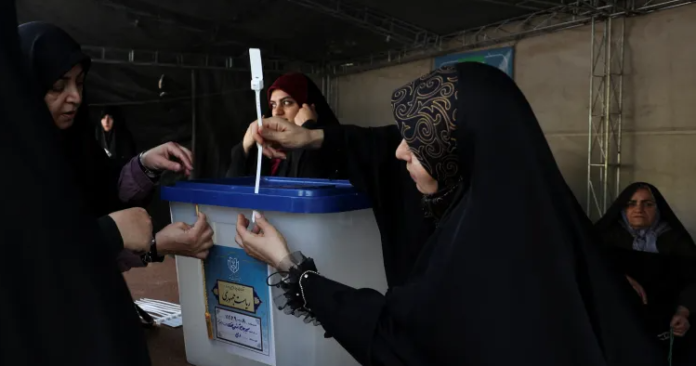Iranians have begun voting in the presidential elections, marking the first since the tragic death of President Ebrahim Raisi in a helicopter crash in May. This pivotal moment saw more than 61.5 million citizens aged over 18 eligible to elect a new leader, but the shadow of political controversy looms large over the process.
Despite the opportunity to shape the nation’s future, millions of voters are expected to boycott the election. Many believe that the electoral process will be manipulated to ensure the victory of a loyalist candidate, casting a pall over the democratic exercise.
Polls Open Following Tragic Death of President Raisi
Iranians have begun voting in the presidential elections, the first since the death of President Ebrahim Raisi in a tragic helicopter crash in May. More than 61.5 million citizens aged over 18 are eligible to vote for a new leader.
Widespread Boycott Anticipated
Despite the opportunity to vote, millions are expected to boycott the election, citing concerns over potential manipulation favouring a loyalist candidate.
Extensive Voting Infrastructure in Place
Interior Minister Ahmad Vahidi announced that nearly 60,000 voting stations and 90,000 “voting points” have been established across the country. Additionally, over 300 voting stations have been set up abroad to accommodate the Iranian diaspora. However, logistical issues have arisen, with Vahidi noting challenges in collecting votes from Iranians at the Hajj in Saudi Arabia and Canada refusing to host voting stations.
Voter Turnout and Candidate Projections
The Interior Ministry confirmed that 61,452,321 people are eligible to vote. Recent polls from the parliament’s research centre, as reported by state-linked Tasnim news, indicate a projected turnout of 48.6 per cent, potentially marking a historic low. Current projections place Pezeshkian in the lead with nearly 30 per cent, followed by Jalili and Ghalibaf with 18.8 and 16.8 per cent, respectively, while Pourmohammadi lags at six per cent. Approximately 24 per cent of voters remain undecided, potentially influencing the final outcome.
Candidates’ Final Push
Each candidate has pledged to represent the people and deliver effective governance. Their immediate challenge is to energize voters and prevent a repeat of recent elections marked by record-low turnouts. A high voter turnout could either favour the reformist wing or necessitate a second round of voting the following week.
Supreme Leader Urges Public Participation
Supreme Leader Khamenei has called on the public to vote, emphasizing the election’s importance as a political test and the necessity of a high turnout. Speaking at a mosque attached to his offices in Tehran, Khamenei expressed confidence in the process and urged citizens to participate.
Election Process and Aftermath
Voter turnout has declined over the past four years amid widespread dissatisfaction among the youth. Ballots are counted manually, with final results expected within two days, although initial figures may be released sooner. Should no candidate secure over 50 per cent of the vote, a run-off between the top two candidates will be held on the first Friday after the results are announced.
Voting Procedure
Iranians aged 18 and older are eligible to vote at 58,640 polling centres nationwide, located in mosques, schools, and other public buildings. Voters must present their national ID card, fill out a form, and mark their index finger with ink to prevent double voting. They then write the name and numerical code of their chosen candidate on a secret ballot and drop it into a ballot box.



